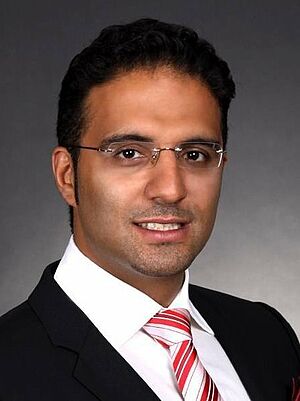
Scientist
40225 Düsseldorf
CV
Dr. rer. nat. Dip.-Ing. Ahmad Reza Cheraghi started as a PhD student at the University of Heinrich Heine in Duesseldorf/Germany at the "Technology of Social Networks" Lab in the Institute of Computer Science in 2014. His research area was nature-inspired algorithms for mobile, communicating, and sensing robot swarms.
He has a M.Sc. in Computer Engineering from the University of Applied Sciences in Krefeld/Germany and has a solid working experience as international commissioning engineer for automation systems of steel plants, as well as in entrepreneurship for technology-based startups in Germany.
His research interests were at the beginning for delay tolerant-, opportunistic- and mobile ad hoc networks, peer-to-peer, internet of everything, security and operating systems. Later, his research interests changes to nature-inspired algorithms for mobile, communicating, and sensing robot swarms.
He successful finished his PhD with the total grade of "Magna Cum Laude" on July the 5th, 2022.
Dissertation Abstract:
Imagine a world full of robots created to do mundane or dangerous tasks, for example cleaning, carrying heavy objects, protecting us, or searching for survivors in dangerous places. These are examples for the future. But, the complexity of developing these robots should not be underestimated. The hardware and software need to be designed, developed, and tested. Each robot needs to have artificial intelligence. Additionally, the collaboration and communication among robots must work seemlessly.
In this dissertation, we deal with robot swarm, based on three problem statements including 11 research questions.
Robot swarms are groups of robots that accomplish tasks that are either impossible to solve by one robot or time-consuming. It is an emerging scientific field.
We design, develop, and evaluate a simulator and seven nature-inspired algorithms for robot swarms. Before doing so, however, we conducted research on robot swarms and summarized 217 publications. The result is an overview of robot swarms' past, present, and future. In addition, a comprehensive review of the current state-of-the-art network simulators has been prepared. This survey compares 25 simulation tools for peer-to-peer, opportunistic, and mobile ad-hoc networks.
We built a new simulator for robot swarms called Swarm-Sim based on the gained insights. Swarm-Sim is easy to understand as it is written in Python.
It has an API that is easy to learn, allowing the implementation of a scenario and solutions for various robot swarm tasks. It has an advanced GUI, which displays the animation of the simulation either in 2D or 3D, and allows for changes to the environment ad-hoc. Therefore, Swarm-Sim is a simple to learn and easy to apply simulator to develop and evaluate robot swarm algorithms.
This dissertation's central and essential contribution is the nature-inspired robot swarm algorithms. We implemented and evaluated seven algorithms on the Swarm-Sim and categorized them into three application areas.
The first application task is the swarm coating. With swarm coating, the robot swarm is to enclose an arbitrarily shaped object from all sides. We have developed two algorithms for this purpose. Swarm communication is the second application area. We deal with how robots can communicate with each other within the swarm. Both indirect and the direct communication is considered. Last but not least, we deal with swarm movement. We present two algorithms for coordinated movement within the swarm and how to motivate the robot swarm to move in different directions.
As a result, this dissertation provides three modules with ten contribution, presented with summaries from ten papers. The summaries contain two surveys about robot swarms and network simulators, one article about the Swarm-Sim simulator, and seven nature-inspired algorithms for robot swarms. We hope that with this dissertation we have made an important contribution to the scientific community and to the further development of robot swarms.
Visiting hours
Whenever I am present or by arranging a meeting via email.


